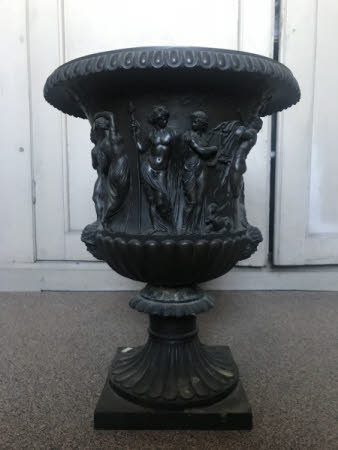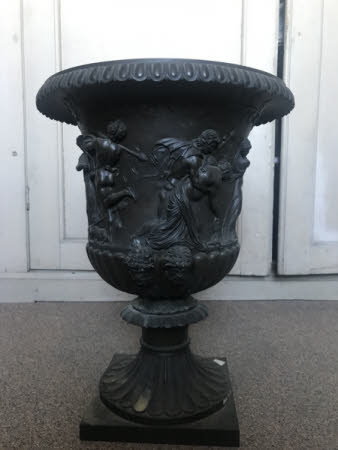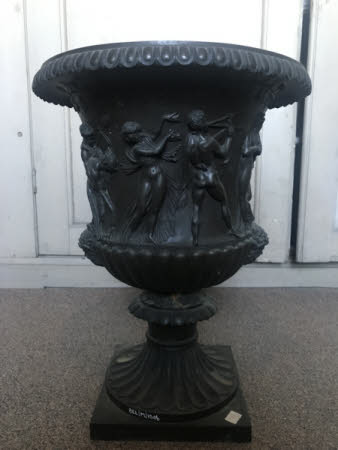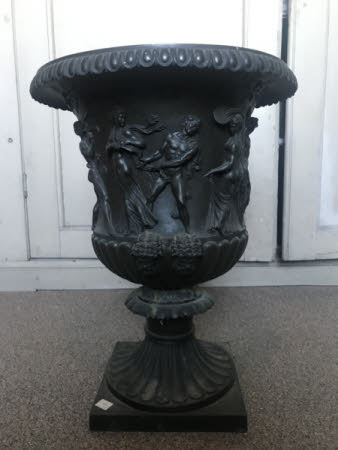The Borghese Vase
Category
Art / Sculpture
Date
circa 1780 - circa 1850
Materials
Bronze
Measurements
490 x 220 x 220 mm
Place of origin
Rome
Order this imageCollection
Belton House, Lincolnshire
NT 435419.2
Summary
Bronze, The Borghese Vase, Italian, c.1780-1850, after the antique. One of a pair with NT 435419.1. The vase is decorated with a vine motif and a relief depicting the thiasus: a Bacchanalian procession presided over by Bacchus and his wife Ariadne. The lower section is gadrooned with paired mascarons shaped as satyrs’ heads. The vase is mounted on a tapering fluted stem and square plinth. Bacchus, the god of wine, is crowned with ivy and vine and holds a pine-cone-topped staff known as a thyrsus. His panther, also holding a thyrsus, can be seen lying to the right of Ariadne who plays a lyre. Satyrs and maenads dance and play musical instruments including an aulos, crotalum, bagpipes and a tambourine. One drunken satyr, who may be Silenus, collapses after too much revelry.
Full description
The original Borghese Vase is a marble krater made in Athens in the 1st century BC. Now in the Louvre Museum, it was rediscovered in 1566 in the gardens of Sallust, Rome, and later acquired by the Borghese family. Reductions in bronze, alabaster, biscuit, and jasperware (Wedgwood) proliferated from the mid-late 18th century, regularly paired with a copy of The Medici Vase. High-quality bronze reductions were produced in Rome from the late 18th century by Francesco Righetti (1738-1819) and Giacomo (c. 1731-85) and Giovanni Zoffoli (c.1745-1805) Zoffoli. A signed example by Zoffoli is at Saltram (NT 871621.2), whilst another unsigned reduction at Osterley (NT 771969.1) is likely to have been made in Rome around the same time. See also bronze copies at Penrhyn Castle (NT 1421796.1) and Hinton Ampner (NT 1529966.1), a version in Coade artificial stone at Stourhead (NT 562904), Alice Rylance-Watson October 2018
Provenance
Purchased with a grant from the National Heritage Memorial Fund (NHMF) from Edward John Peregrine Cust, 7th Baron Brownlow, C. St J. (b.1936) in 1984.
Credit line
Belton House, The Brownlow Collection (acquired with the help of the National Heritage Memorial Fund by the National Trust in 1994)
References
Haskell and Penny 1981: Francis Haskell and Nicholas Penny, Taste and the Antique, The Lure of Classical Sculpture 1500 - 1900, New Haven and London, 1981, no. 81, p.315



